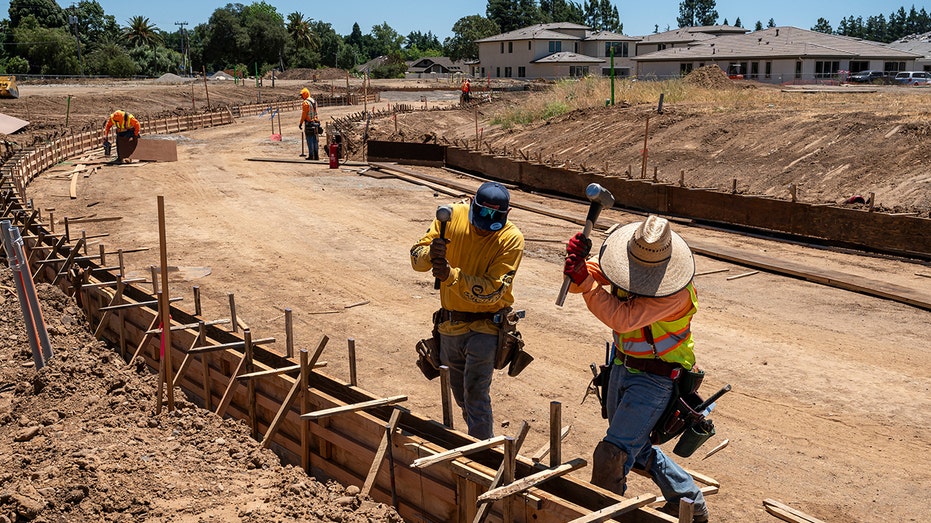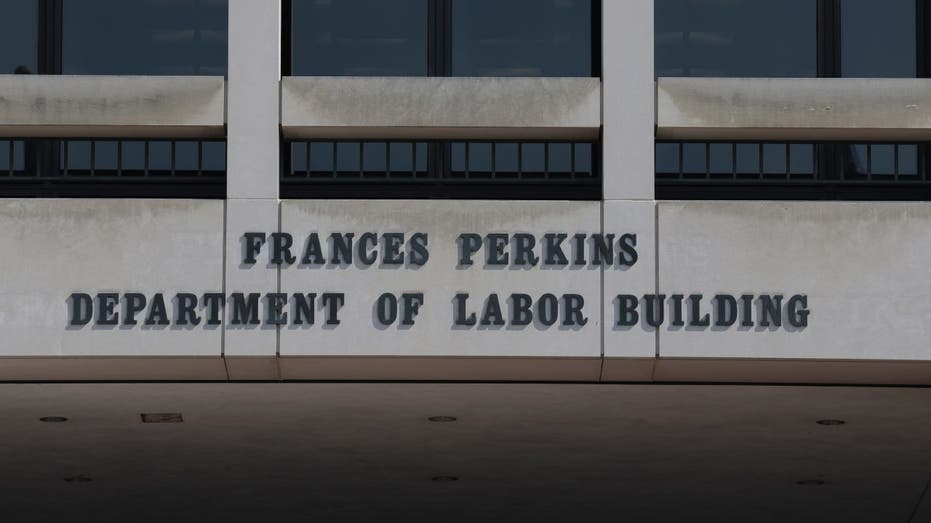Wall Street Journal editorial board member Allysia Finley discusses President Donald Trumps claim that the jobs report was politically manipulated before the election to help Joe Biden on Varney & Co.
President Donald Trump‘s move to fire the commissioner of the Bureau of Labor Statistics (BLS) after a weaker-than-expected July jobs report and large revisions has spurred questions about how the agency gauges changes in the U.S. workforce.
Trump terminated BLS Commissioner Erika McEntarfer on Friday and claimed she “faked the Jobs Numbers before the Election.”
The BLS reported that last month the U.S. economy added 73,000 jobs, well below the gain of 110,000 jobs estimated by LSEG economists. It also made downward revisions that reduced employment in May and June by 258,000.
Despite the president’s criticisms, revisions to the monthly jobs report produced by the BLS are standard statistical practice aimed at improving the accuracy of the data as more of the sample come in. Revisions are also baked into the BLS’ survey process to ensure the best possible data over time.
US JOB GROWTH COOLED IN JULY AMID GROWING ECONOMIC UNCERTAINTY

President Donald Trump fired the BLS commissioner, claiming without evidence that the jobs report was manipulated. (Yuri Gripas/Abaca/Bloomberg via Getty Images / Getty Images)
In a video released earlier this year, the BLS explained that the U.S. economy had over 12.2 million business establishments with over 155.7 million employees as of June 2024. The Current Employment Statistics survey contacts about 121,000 businesses and government agencies on a voluntary basis each month, representing 631,000 individual worksites – which the BLS notes is one of, if not the largest monthly surveys in the world.
Here are several reasons why the Labor Department has to revise jobs numbers.
Quick turnaround
The time period for data collection ranges between 10 and 16 days, though the average is 12 to 13 days, so some businesses may not be able to report within that period. For example, some respondents that pay employees monthly instead of biweekly may not be able to report their data ahead of the deadline.
BANK OF AMERICA’S CEO RESPONDS TO WEAK JOBS REPORT THAT SPURRED TRUMP FIRING OF BLS CHIEF
Response rates
The initial monthly jobs figure is regarded as a preliminary estimate, as the process builds in two revisions reported in subsequent months as more data is collected. Response rates rise for the first and second revisions as more businesses send in their responses to be tabulated.
BLS explained in its video that from 2020 to 2023, the average collection rate for its first publication of a given month’s employment levels was 68.3%. That figure rose to 89% for the second publication (or the first monthly revision), and to 92.8% for the third publication (or second monthly revision).

Businesses may report inaccurate data they subsequently correct, or fail to respond on time to initial reports, but can still be included through revisions. (Photographer: David Paul Morris/Bloomberg via Getty Images / Getty Images)
TRUMP ORDERS TERMINATION OF LABOR STATISTICS OFFICIAL AFTER JOBS REPORT AND DOWNWARD REVISIONS
Non-response & sampling error
Part of the reason for having two built-in monthly revisions is to allow time for businesses and agencies that didn’t report in time for the first or second published estimates to respond to the survey.
Respondents may also submit incorrect information that can later be corrected due to the presence of the first and second revisions within the BLS’ reporting process. As more samples are collected and reported in the revisions process, it reduces reporting errors and non-response errors to boost the quality of the data.

President Donald Trump and his administration have continued to defend the firing of Bureau of Labor Statistics Commissioner Erika McEntarfer over a weaker-than-expected jobs report last week. (Anna Moneymaker/Getty Images / Getty Images)
BLS also makes seasonal adjustments to its data based on the most current month to make seasonal adjustments, rather than a forecast. That requires seasonal adjustments to be made to previously reported data. That process and the inclusion of new sample data over time allows the agency to reduce revisions and errors in annual data.
GET FOX BUSINESS ON THE GO BY CLICKING HERE
Non-response and reporting errors, as well as the birth and death of firms, accumulate on a monthly basis. To address that, the BLS goes through an annual benchmarking process to re-anchor its sample to more current population data to prevent data from drifting further away.
BLS benchmarks population counts for the month of March each year. The agency said in its most recent monthly jobs report that its preliminary benchmark will be released in early September this year, which will be finalized in February 2026.
#revisions #jobs #report #work #occur